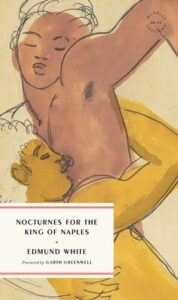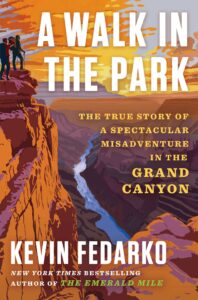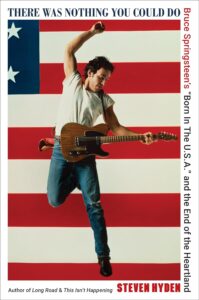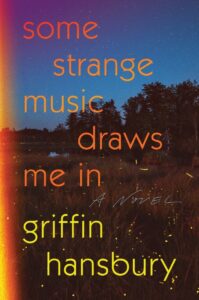
5 Book Reviews You Need to Read This Week
“The novel draws on a long tradition of mystical writing that confuses sacred and secular desire.”
Our feast of fabulous reviews this week includes Garth Greenwell on Edmund White’s Nocturnes for the King of Naples, Alex Preston on Richard Flanagan’s Question 7, Blair Braverman on Kevin Fedarko’s A Walk in the Park, Chris Klimek on Steven Hyden’s There Was Nothing You Could Do, and Grace Byron on Griffin Hansbury’s Some Strange Music Draws Me In.
Brought to you by Book Marks, Lit Hub’s home for book reviews.
*

“Edmund White’s Nocturnes for the King of Naples opens with the most remarkable account of cruising I know. By cruising I mean a specifically gay male practice of organized promiscuity, a form of sexual sociality at once universal—existing, in remarkably similar forms, in rural American truck stops and among Roman ruins—and, as White chronicles it, specific to a particular time and place, the Chelsea piers in nineteen-seventies New York, part of the extravagant, unprecedented gay world that flourished between the Stonewall riots of 1969 and the onset of the aidscrisis. In the nighttime scene that opens the book, men brush past each other in the dark, alert in their animal bodies, their senses sharpened by hunger; they send up cigarette flares, displaying themselves against the night sky; they pair off or remain solitary, unchosen—like the narrator, who lingers until sunrise, when finally he finds a man to go home with …
The novel draws on a long tradition of mystical writing that confuses sacred and secular desire, using the language of sexual pleasure to denote spiritual rapture. If nothing else, especially in the context of 1978, this constitutes a remarkable statement about queer lives: that they are possessed of a dignity and significance that can be adequately described only by the resources of the devotional tradition … Far from the heroic queers that populate much post-Stonewall cultural production, the narrator of Nocturnes is melancholic, diffuse, too wan for political action, ‘less a man in time,’ as he says of another character, ‘than a synchronous field of energy’ … White’s novel is best understood, I think, as adhering to an alternative, anti-identitarian queer tradition that has never been wholly congenial to North American readers … It is not merely a historic record, or an essential document of a crucial career, but a psychological study of complexity and depth, and a stylistic performance of an immaculacy seldom achieved.”
–Garth Greenwell on Edmund White’s Nocturnes for the King of Naples (The New Yorker)

“From the very first sentence of Richard Flanagan’s 12th book, Question 7, the model for this extraordinary, hybrid work is clear. WG Sebald is there in the subject matter: the second world war and the ethics of mass bombing campaigns; the interweaving of personal and political history; the blending of truth, memory and a kind of hyper-real imagined past. Sebald is there in the deeper currents: a somewhat solitary, occasionally ridiculous middle-aged man seeking to come to terms with his place in the world, wrestling in particular with his complex love for a father whose own life was defined by his experiences in the war. It’s there even in the rhythms of the prose. The book begins like a Sebald tribute act, with its stateliness, its subclauses, its melancholy … the story of Flanagan’s attempts to understand his parents, both of whom have recently died, and through them the strange contingency of his own life …
There’s so much more in Flanagan’s beautiful, unclassifiable novel-cum-memoir. There’s the genocide of Tasmania’s Indigenous peoples (and a series of links to HG Wells); there’s the author’s meeting with one of the prison guards who tortured his father; there’s a section at the end in which Flanagan describes his own brush with the capriciousness of existence: an almost fatal kayak accident that reads like 127 Hours. This book already comes laden with praise from its Australian publication–Peter Carey said it ‘may just be the most significant piece of Australian art in the last 100 years.’ That it is a masterpiece is without question. Sebald himself would have been proud of the subtlety, the depth, the intensity of thought and feeling.”
–Alex Preston on Richard Flanagan’s Question 7 (The Guardian)

“Maybe it’s when he’s extracting drinking water from damp sand with a syringe, trying desperately not to die from dehydration, but there came a point in A Walk in the Park, Kevin Fedarko’s memoir about walking the length of the Grand Canyon, that I thought: Wow, this hike is a terrible idea … He uprooted his life to volunteer for a tour company, handling raw sewage on rafting expeditions in the hope of one day being promoted to the driver’s seat of a dory. As he relates one grievous mishap after another, the reader faces a dawning realization. Wait: Is this guy going to walk the whole canyon because he’s not good enough to row a boat? Indeed—and outdoor literature is the better for it, because A Walk in the Park is a triumph. Fedarko doesn’t describe awe; he induces it, with page-turning action, startling insights and the kind of verbal grace that makes multipage descriptions of, say, a flock of pelicans feel riveting and new …
The book never shies from its paradoxes: I did this so you don’t have to; I did this because you shouldn’t; I shouldn’t have done this, but it’s good I did. By the time the men complete their yearlong hike, they’ve endured and overcome so much that they’re briefly mistaken for plane crash victims. But in truth, they, and we, are pilgrims on holy ground. Readers will be tempted to visit the canyon just to keep the book’s spell alive longer—and to feel Fedarko’s company in their awe.”
–Blair Braverman on Kevin Fedarko’s A Walk in the Park: The True Story of a Spectacular Misadventure in the Grand Canyon (The New York Times Book Review)

“There’s a reason ‘Bruce Springsteen’ is still a viable Halloween costume in 2024, and that reason is Born in the U.S.A. … The Boss’s red-bandanna-and-sleeveless-flannel-shirt phase was only a blip within a performing career that has now spanned more than half a century. More than a dozen Springsteen albums have been packaged behind portraits of his invariably careworn mug; only Born in the U.S.A. came swaddled in an Annie Leibovitz close-up of the denim-clad Boss-terior. But it was this synthesizer-heavy era that made Springsteen a permanent celebrity beyond the sphere of music fandom—and made it possible for the 74-year-old to continue filling stadiums even now, despite how profoundly the America beyond them has changed.
The disappearance of that metaphorical breadbasket, wherein the workaholic Springsteen briefly became an unlikely figure of national consensus, is the subject of ride-or-die Springsteen fan Steven Hyden’s new book … Hyden is an imaginative cultural omnivore, which means his critical examination occasionally takes the form of something like fan fiction … Your appetite for these kinds of fanboy thought experiments is a reliable gauge of whether this book is for you. If Springsteen’s red-headband, swole-arms incarnation is the only one you’d recognize at a costume party, it might not be. But if the sight of a bejeweled, haunted-looking man with slicked-back hair and a goatee makes your brain say, ‘Tom Joad-era Bruce,’ it definitely is.”
–Chris Klimek on Steven Hyden’s There Was Nothing You Could Do: Bruce Springsteen’s ‘Born In The U.S.A.’ and the End of the Heartland (The Washington Post)

“Through this intimate examination of desire and destruction, Hansbury builds a careful tale of growing up in an age when mystery was the defining characteristic of the trans experience, opening up the untidiness of trans identity and the fractures that occur when navigating a world without mentors or father figures. Hansbury doesn’t attempt to offer a neat tale of representation or trauma, but instead digs into one particular trans man’s embodied experience and struggle to contextualize his childhood and unsatisfying adulthood. Through Mel and Max, Hansbury is able to explore trans identity at a curious slant, offering a story of the trans-masculine experience that evokes the dangers of a boyhood lived in the shadow of girlhood. If girlhood is about reckoning with a lack of bodily autonomy in Hanbsury’s novel, masculinity is about unfettered anger …
This is a curious formulation of identity, one that few novelists have dared to explore: the mirroring possibilities of trans men and women and our relationships and responsibilities to one another … By alternating between girlhood and manhood, Hansbury explores the jaggedness of identity and the lack of easy gendered delineations. This allows the reader a way into understanding Max’s bitterness at being read as only a man, or as someone incapable of perpetuating misogyny … Imperfect as he is, Max grows up by the end of this novel, becoming the mentor he so desperately craved as a child. Through him, Hansbury has created a character all too rare in the world of contemporary literary fiction: a man who is able to extend compassion across generations. His life, then, is more than a tense and moving story—it is also a puzzle formed by the spikiness of identity.”
–Grace Byron on Griffin Hansbury’s Some Strange Music Draws Me In (The Nation)
Book Marks
Visit Book Marks, Lit Hub's home for book reviews, at https://bookmarks.reviews/ or on social media at @bookmarksreads.




















